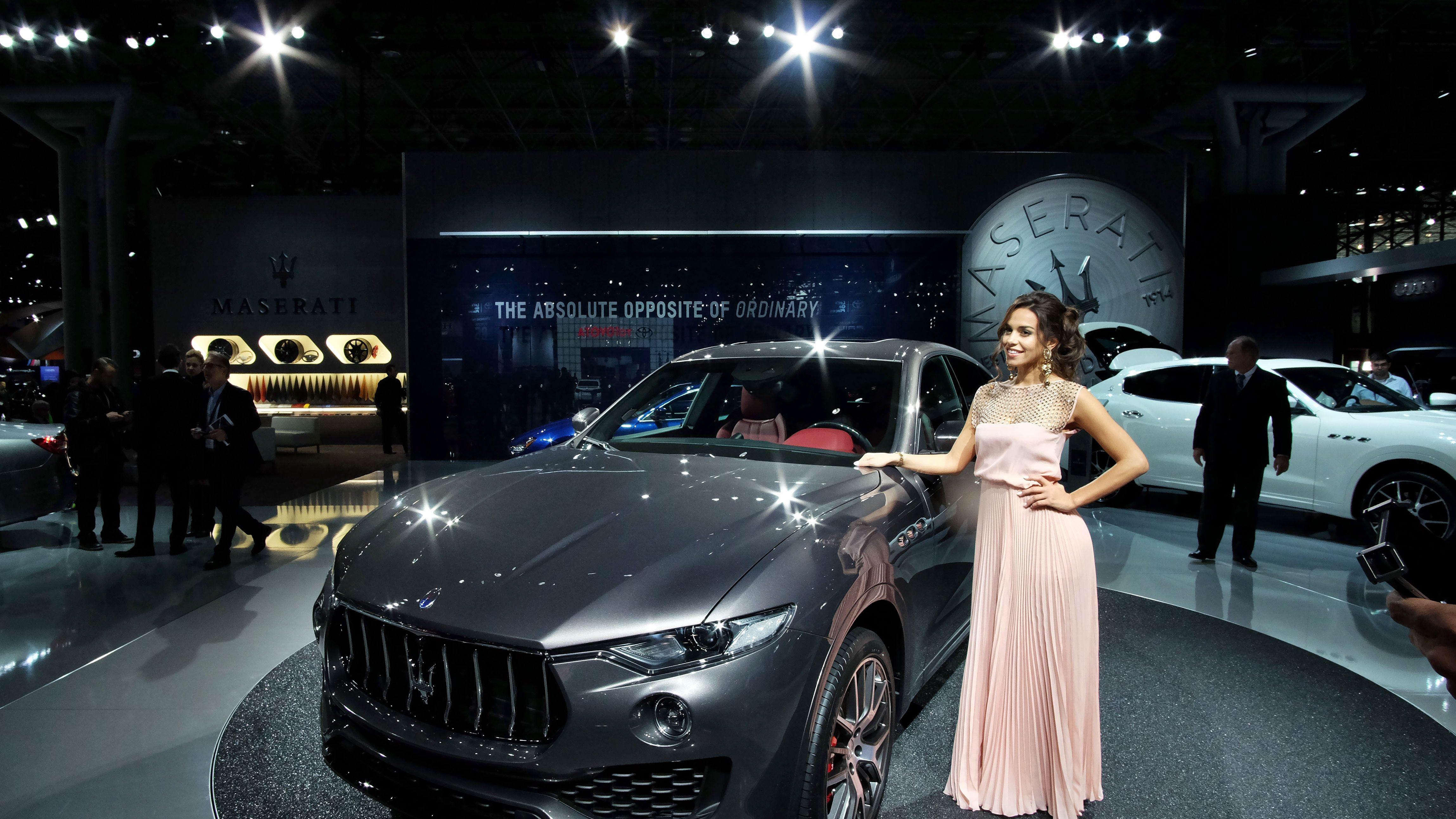Maserati shooting for ‘sexy’ SUV to boost sales

Maserati CEO Harald Wester expects the first-ever SUV for the exclusive Italian carmaker to nearly double its current output.
The Fiat Chrysler Automobiles NV brand, he said, plans production of the Maserati Levante to peak at 30,000 in 2017, with roughly 10,000 SUVs each slated for the U.S. and China. That compares to combined global shipments of less than 32,500 for its current four-car lineup in 2015.
“I personally, strongly believe that we will see something beyond this,” Wester told The Detroit News during a recent interview. “But we will not sell on price. It’s what I said before, don’t do anything which does potentially harm the brand.”
Maserati is betting its heritage and reputation for performance, elegance and style will distinguish the $72,000-plus SUV from a growing pool of competitors, including the segment-flagship Porsche Cayenne.
“There is nothing as sexy as Maserati,” Wester said. “It’s 100 percent Maserati. That’s important. It is something you can see, and you can feel, and you will experience. And the rest doesn’t matter.”
The Levante, which is arriving in European showrooms, has been more than a decade in the making. It is finally expected to arrive in the United States by late summer, with a good supply in dealerships by early October.

The Levante is expected to accelerate Maserati’s growth in revenue and earnings — driving it to meet lofty 2018 goals of a 15 percent profit margin, up from 4.4 percent in 2015.
The SUV segment has become a must for premium luxury brands since the introduction of the Cayenne in the early 2000s — a gamble at the time that led to the release of a second SUV, the Macan. The two vehicles sold more than 30,000 in the U.S. in 2015, accounting for 58 percent of Porsche’s sales.
IHS Automotive reports that SUVs, including crossovers, have grown from 24 percent of global premium luxury vehicles in 2010 to an estimated 35 percent in 2015. The automotive consulting and advisory service firm estimates that segment to grow globally to 39 percent in 2021.
“Porsche proved that a niche sports car brand having an SUV is not an issue,” said IHS Automotive senior analyst Stephanie Brinley. “You just have to do it well, and you have to make sure you align with your brand’s DNA.”
Protecting the brand has been Wester’s guiding principle amid several production delays, including changing initial production plans from Detroit to Italy. Its reputation has never been more important, as Maserati became Fiat Chrysler’s most-coveted brand after the spin-off of Ferrari in January.
Maserati’s revenue in 2015 was 2.4 billion euros ($2.7 billion), down from a record year of nearly 2.8 billion euros ($3.1 billion) in 2014. The decline was due to an 11 percent decrease in shipments — particularly in China, where a decline in the luxury segment led to a 28 percent drop in shipments for Maserati.
When asked about concerns about being late to a segment Maserati has never competed in, Wester argued it doesn’t matter as long as the Levante, which the company is touting as “The Maserati of SUVs,” stays true to Maserati’s DNA.
“I find the more I think about it and the more I get asked about it, the more I find it really strange that we are still discussing this thing about Maserati as a brand and an SUV,” he said. “To me, it seems a really fake and virtual problem. Give this baby time to get where it needs to go.”

The Levante will be powered by a 3.0-liter V-6 twin-turbo gasoline engine in the U.S. capable of either 345 horsepower on the entry-level Levante or 424-horsepower on the Levante S. A diesel-powered version rated at 275-horsepower will not be available in the U.S.
The Levante S — starting at $83,000 — covers 0-60 mph in 5.1 seconds and has a top speed of 164 mph. The regular Levante accelerates from 0-60 mph in 5.9 seconds and tops out at 156 mph.
Wester declined to speculate on what the mix of sales will be between the two models.
“The target customer are all those buying this type of cars, and I’m absolutely sure there are a lot of people in this segment, with all the brands which I don’t want to mention but you know them, which are looking for automobile distinctiveness,” he said.
The Levante’s arrival will be a relief for its 415 global dealers.
David Butler, an executive manager at the Suburban Collection dealership group, which operates a Maserati dealership in Troy, previously told The News “everybody’s in anticipation of the SUV coming out.”
He said about half of its sales last year through August were Ghibli — the lowest-priced model of its current four-car lineup. He expects that to change after the Levante arrives.
Wester said Maserati will now focus on successors for the $132,000-plus GranTurismo and $145,000-plus GranTurismo Convertible “to round out the portfolio,” and then its new halo car, the Alfieri sports coupe.
“The objectives never change,” Wester said. “I think it is important that the brand arrives in perfect status. You will see, over the next 12 months, further important product milestones for the existing range.”
mwayland@detroitnews.com
(313) 222-2504